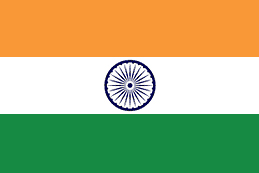National Flag of India
Why in News:
- The Union government has asked States to ensure that people don’t use plastic national flags.
About the National Flag

- The National Flag is a horizontal tricolour of India saffron (kesaria) at the top, white in the middle and India green at the bottom in equal proportion.
- The ratio of width of the flag to its length is two to three.
- In the centre of the white band is a navy-blue wheel which represents the chakra. This Dharma Chakra depicted the “wheel of the law” in the Sarnath Lion Capital made by the 3rd-century BC Mauryan Emperor Ashoka. The chakra intends to show that there is life in movement and death in stagnation. Its diameter approximates to the width of the white band and it has 24 spokes.
- The flag is based on the Swaraj flag, a flag of the Indian National Congress designed by Pingali Venkayya
- The top saffron colour indicates the strength and courage of the country. The white middle band indicates peace and truth with Dharma Chakra. The green shows the fertility, growth and auspiciousness of the land.
- Its diameter approximates to the width of the white band and it has 24 spokes.
- The design of the National Flag was adopted by the Constituent Assembly of India on 22 July 1947.
Laws related to the flag code
- ‘The Prevention of Insults to National Honour Act, 1971’
- ‘Flag Code of India, 2002’, which govern the display of the national flag.
- According to Article 51A (a), it shall be the duty of every citizen of India to abide by the Constitution and respect its ideals and institutions, the National Flag and the National Anthem.
Evolution of Indian flags

- The first national flag in India is said to have been hoisted on August 7, 1906, in the Parsee Bagan Square (Green Park) in Kolkata. The flag was composed of three horizontal strips of red, yellow and green with Vande Mataram written in the middle.

- The second flag was hoisted in Paris by Madame Cama and her band of exiled revolutionaries in 1907 . This was very similar to the first flag except that the top strip had only one lotus but seven stars denoting the Saptarishi. This flag was also exhibited at a socialist conference in Berlin. This flag was the first Indian flag to be hoisted in a foreign land.

- The year 1931 was a landmark in the history of the flag. A resolution was passed adopting a tricolor flag as our national flag. This flag, the forebear of the present one, was saffron, white and green with Mahatma Gandhi’s spinning wheel at the center.
References:
- https://knowindia.gov.in/national-identity-elements/national-flag.php
- https://knowindia.gov.in/my-india-my-pride/indian-tricolor.php
- https://www.thehindu.com/news/national/government-tells-states-to-stop-using-national-flags-made-of-plastic/article35804104.ece
Subscribe
Login
0 Comments
